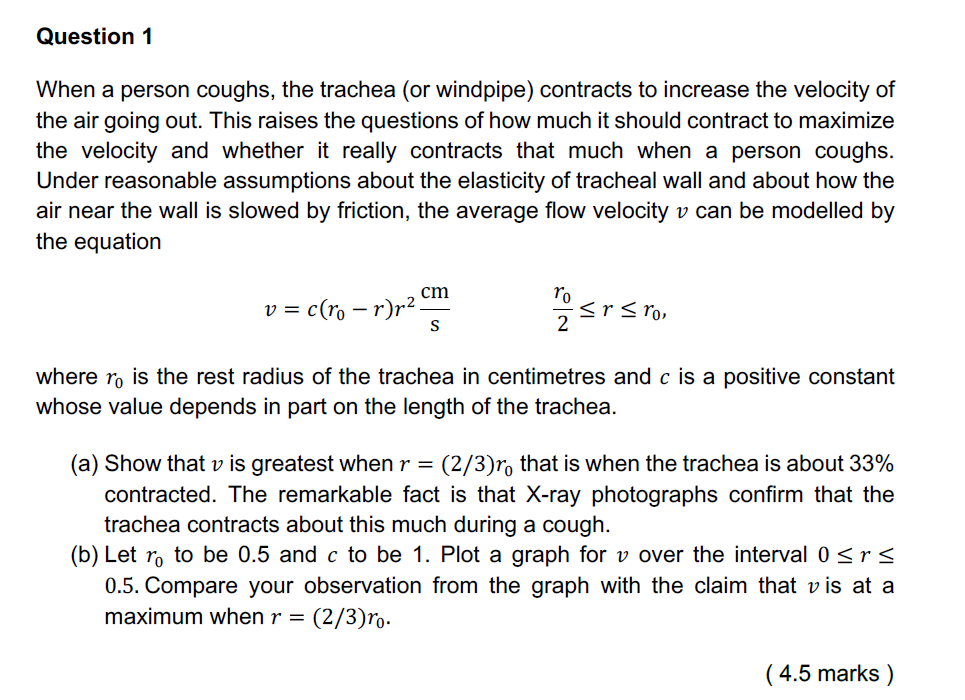Home /
Expert Answers /
Calculus /
question-1-when-a-person-coughs-the-trachea-or-windpipe-contracts-to-increase-the-velocity-of-the-pa648
(Solved): Question 1 When a person coughs, the trachea (or windpipe) contracts to increase the velocity of the ...
Question 1
When a person coughs, the trachea (or windpipe) contracts to increase the velocity of
the air going out. This raises the questions of how much it should contract to maximize
the velocity and whether it really contracts that much when a person coughs.
Under reasonable assumptions about the elasticity of tracheal wall and about how the
air near the wall is slowed by friction, the average flow velocity v can be modelled by
the equation
v=c(r_(0)-r)r^(2)((cm))/((s)),(r_(0))/(2)<=r<=r_(0)
where r_(0) is the rest radius of the trachea in centimetres and c is a positive constant
whose value depends in part on the length of the trachea.
(a) Show that v is greatest when r=((2)/(3))r_(0) that is when the trachea is about 33%
contracted. The remarkable fact is that X-ray photographs confirm that the
trachea contracts about this much during a cough.
(b) Let r_(0) to be 0.5 and c to be 1 . Plot a graph for v over the interval 0<=r<=
0.5. Compare your observation from the graph with the claim that v is at a
maximum when r=((2)/(3))r_(0).